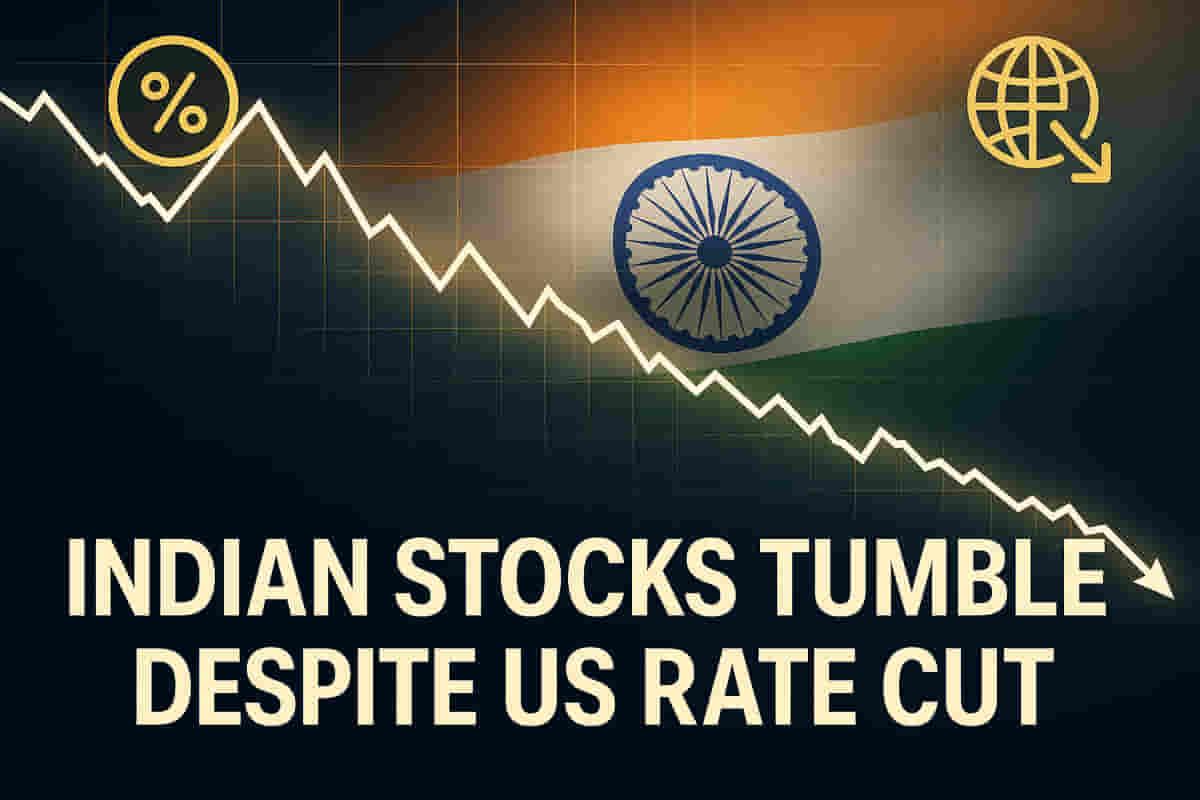Indian Stocks Decline Despite US Fed Rate Cut and FII Buying Amidst Profit-Taking
Economy
|
30th October 2025, 9:12 AM

▶
Stocks Mentioned :
Short Description :
Detailed Coverage :
Indian stock markets faced a notable decline on Thursday, with the BSE Sensex dropping by 579 points to 84,423 and the NSE Nifty 50 index falling by 175 points to 25,884. This downturn persisted even as the US Federal Reserve announced a 25 basis points interest rate cut, bringing the rate to 3.75%. However, the Fed also signaled caution regarding future rate cuts in December, emphasizing a balanced approach based on evolving economic data. Analysts suggest this cautious stance, coupled with domestic factors, tempered market enthusiasm. The market also saw profit-taking as both Sensex and Nifty were trading less than 2% away from their September 2024 all-time highs. Subdued cues from Asian markets, which saw declines in China's Shanghai Composite and other benchmarks, also contributed to the tepid trading sentiment. Furthermore, the monthly derivatives expiry for the Sensex on Thursday, indicated by a Put-Call Ratio of 0.7, suggested higher open interest in Call options compared to Put options, adding to market volatility.
Impact This news can lead to increased investor caution, potentially causing short-term volatility in Indian equities as traders adjust positions around expiry dates and await clearer economic signals. Rating: 7/10.
Definitions: Basis Points (bps): A unit of measure used in finance to describe small changes in interest rates or other percentages. One basis point is equal to 0.01%. Pivot: In finance, a pivot refers to a significant shift in policy or strategy, often used when a central bank changes its stance on interest rates or monetary policy. Easing: Refers to a monetary policy stance where a central bank reduces interest rates or injects liquidity into the financial system to stimulate economic growth. F&O expiry: Futures and Options expiry refers to the date when derivative contracts (futures and options) must be settled or closed. This can often lead to increased trading activity and volatility in the market. Put-Call Ratio (PCR): A trading indicator that measures the volume of put options traded relative to the volume of call options traded. A low PCR (e.g., below 0.7) can indicate bearish sentiment, while a high PCR can indicate bullish sentiment or vice versa, depending on context. Open Interest (OI): The total number of outstanding derivative contracts (futures or options) that have not been settled or closed. It represents the total volume of trading activity in a particular contract or security. Strike: In options trading, the strike price is the predetermined price at which an option contract holder can buy or sell the underlying asset.